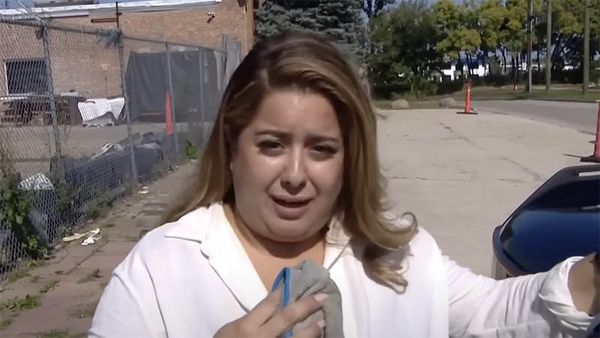
Earlier today I set you the following three puzzles:
- The men’s singles event at Wimbledon is a knockout tournament with 128 players. Without doing any arithmetic - i.e adding up the number of matches in every round - can you work out how many matches are there in total?
- What is the minimum number of times you need to hit the ball with your racket in order to win a set?
- Goode, who is a good tennis player, and Poor, who isn’t, will take turns as your opponent over three sets of tennis. The order for sets 1-2-3 will be either Goode-Poor-Goode, or Poor-Goode-Poor? Which order of opponent do you choose to maximise your chances of winning two sets in a row?
Question 1
The answer is 127.
What I didn’t want you to do was to add the 64 first round matches to the 32 second round matches, to the 16 third round matches, and so on, which is 64 + 32 + 16 + 8 + 4 + 2 + 1 = 127.
Not only is this laborious but it is inelegant.
This way is neater: at the end of each match one player is the winner and one is the loser. At the end of the tournament, every player has lost a match except the champion. So there must be one less match than there are players. There are 128 players so there must be 127 matches.
Question 2
The answer is once.
Imagine if every time you serve you swing at the ball and miss. This is a fault. Do this twice in a row and you lose the point. Do it eight times in a row and you lose the game.
Now imagine you do this for your six service games and that your opponent also double faults on every serve. The score after 12 games will be 6-6 and the set will enter the tiebreak.
If you continue to swing at the ball and miss, and your opponent double faults, neither of you will be able to win the tie-break. But depending on who serves first you will either get to 6-5, or 7-6 ahead. When you you do, ace that serve and you will have won the set with your racket hitting the ball only once.
This question may seem familiar to many of you since it is similar to one of the most controversial moments on the quiz show Who Wants to be A Millionaire. In an episode in 1999, a contestant was asked:
Theoretically, what is the minimum number of strokes with which a tennis player can win a set?
His four choices were 12, 24, 36 and 48. He replied 24, was told it was correct, and won that question, worth £64,000.
The correct answer was 12 - four aces on each of his serves for 3 games, and his opponent double faulting all his serves in 3 games. Later the programme makers admitted they had made a mistake but let the contestant keep his winnings.
If by a ‘stroke’ we mean the racket hitting the ball, however, even 12 is 11 too many.
Question 3
The answer is Goode-Poor-Goode
I love the counter-intuitive nature of the answer: in order to have the best chance of winning two sets in a row you need to play the best player twice!
This is because in order to win two sets in a row you must win the middle game. You have a better chance of winning the middle set against Poor than you do against Goode, so with Goode-Poor-Goode you get an easier middle set and two shots at beating Goode. If you went with Poor-Goode-Poore, you only get one shot at beating Goode.
The insight here is to realise that even though the chances of winning any two sets is better with Poor-Goode-Poor, the chance of winning two sets in a row is better with Goode-Poor-Goode.
For those who are familiar with basic probability theory, we can prove the result more formally. If the probability of beating Poor is p, and the probability of beating Goode is g, then the probability of two wins in a row facing Goode-Poore-Goode are the sum of:
win-win-win: gpg
win-win-lose: gp(1 – g)
lose-win-win: (1 – g)gp
TOTAL: 2gp – ggp = gp(2 – g)
Using a similar table for Poor-Goode-Poor, the probability of two wins in a row works out as gp(2 – p).
Goode is better than Poor, so the probability of beating Poor is greater than the probability of beating Goode, i.e p > g.
Therefore (2 – g) > (2 – p)
And thus gp(2 – g) > gp(2 – p)
So the chances of two wins in a row against Goode-Poor-Goode is greater than the chances in a row against Poor-Goode-Poor.
Sources: 1. of unknown origin. 2. Dick Hess: Number Crunching Math Puzzles. 3. Frederick Mosteller: Fifty Challenging Problems in Probability.
I post a puzzle here on a Monday every two weeks. If you are reading this on the Guardian app, click where it says ‘Follow Alex Bellos’ and you’ll get an alert when the next puzzle appears.
If you want to propose a puzzle for this column, please email me I’d love to hear it.
I’m the author of three popular maths books including Alex’s Adventures in Numberland and the maths colouring book Snowflake Seashell Star.
You can check me out on Twitter, Facebook, Google+, my personal website or my Guardian maths blog.







